How to Level a Washing Machine in 6 Simple Steps
-
Ed Malaker
- Last updated:
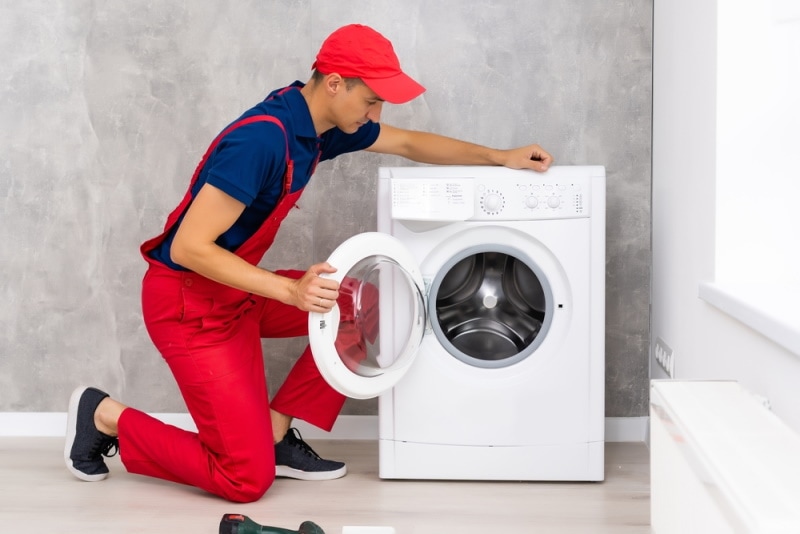
Installing a washing machine is relatively easy and only requires connecting the drain and the hot and cold water pipes. However, if you don’t place it on a level surface, it will likely bounce and jump around frequently when you wash clothes, which can cause premature wear and tear on your machine and might even damage your home. However, many people aren’t sure about the best way to level it. If this sounds like your situation, keep reading as we provide a step-by-step guide to leveling your washing machine.
Before You Begin
Fortunately, leveling your washing machine is not too difficult, even if your floor is not level, and you only need a few tools to complete the task. Get a level and a wrench or leg-adjusting spanner for your model before you begin.
- Level
- Wrench, pliers, or leg-adjusting spanner
How to Level a Washing Machine in 6 Steps
1. Check Your Machine

The first step is to check your washing machine using a level to see how far off it is. Any standard level will work. You can even use a smartphone app if you like. Check how level your washing machine is from left to right and again from front to back, to give you an idea of how much work you need to do.
2. Loosen the Front Locking Nuts
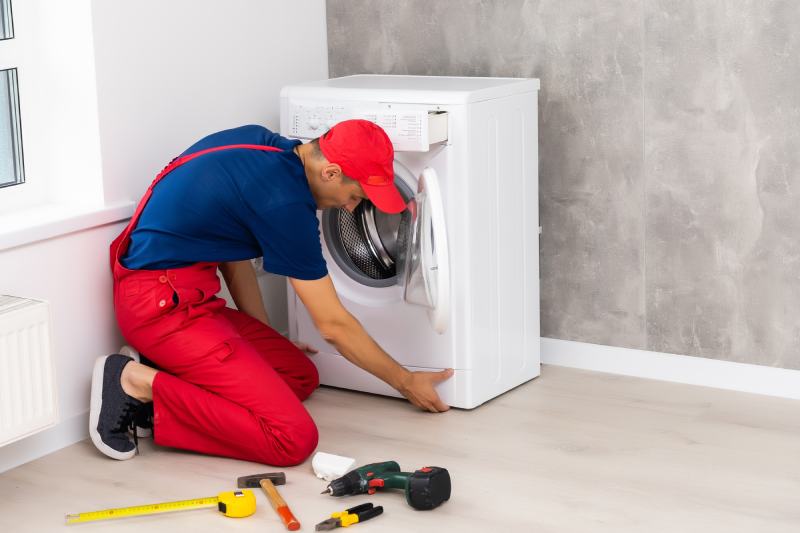
Begin at the front legs of your washing machine. Each will have a locking nut that you will need to loosen to adjust the legs.
3. Adjust the Front Legs
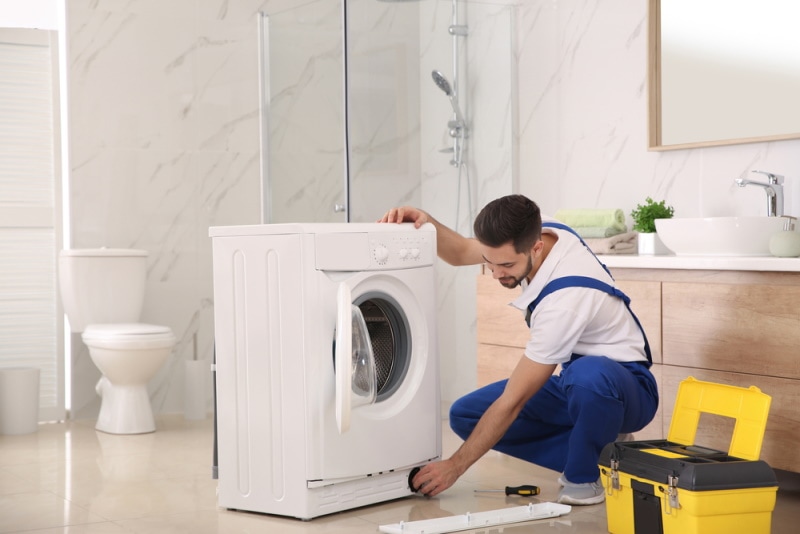
The closer your washing machine is to the ground, the more stable it will be. So, start by screwing both legs in and then adjusting them until the machine is level from right to left. To adjust the legs, read the owner’s manual to check the instructions and use an appropriately sized wrench or pair of pliers. One of the easiest ways to adjust the legs is to use a leg-adjusting spanner — if you can find one for your model. It can be a hassle to get the machine even if you have to do many switches from one side to the other, but with time and patience, you can do it. Just try to keep it as close to the floor as possible.
4. Check the Rear Legs
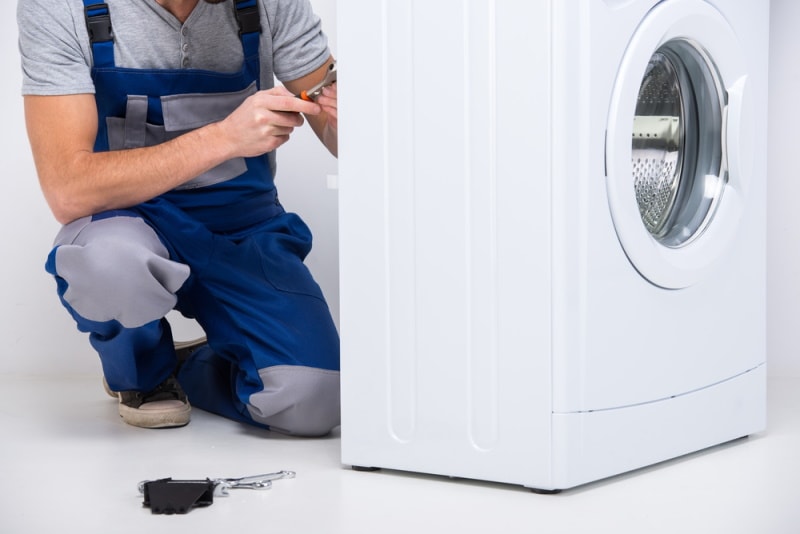
Many washing machines have self-adjusting rear legs. If that is the case on your unit, a second person helping you tilt the washing machine forward until the rear legs lift a few inches off the floor before placing it back down will cause them to adjust automatically. If your machine does not have self-adjusting rear legs, you must follow the same steps that you took for the front legs. Loosen the locking nuts on both rear legs and adjust them until the machine is level in all directions.
5. Re-tighten the Locking Nuts
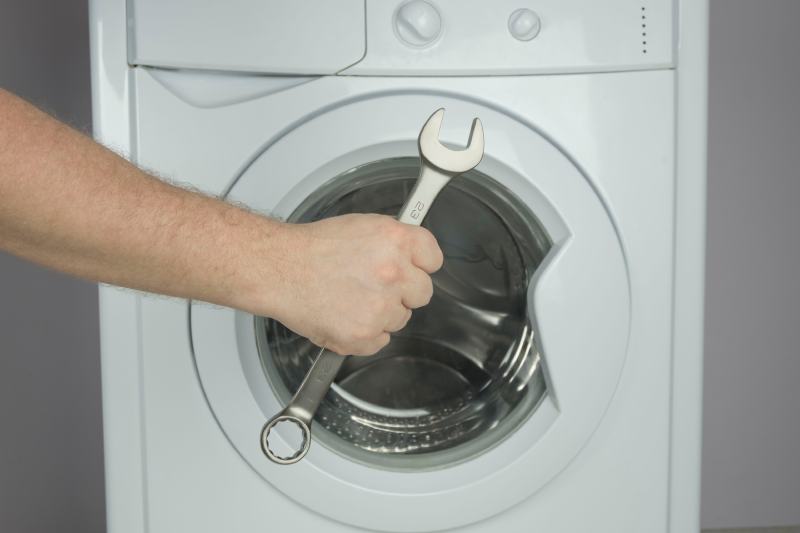
Once you have the machine level in all directions, retighten all the locking nuts so the legs don’t move out of position while using the machine.
6. Test Your Washing Machine
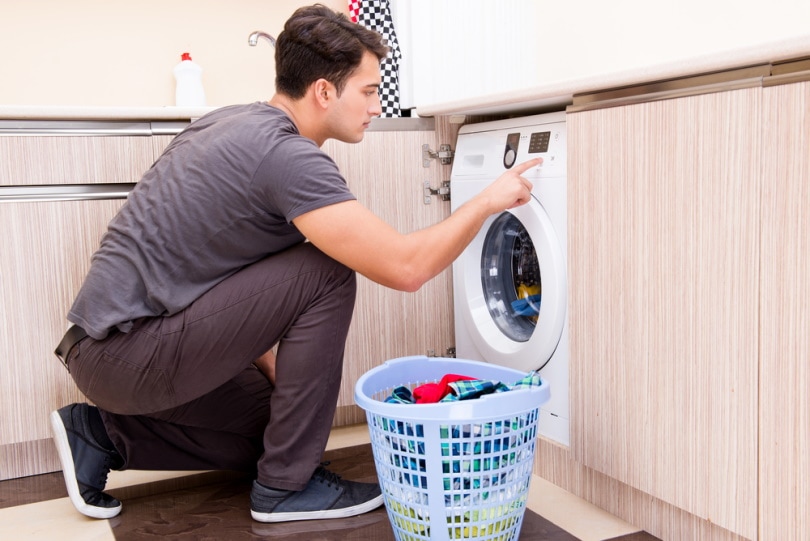
Once the locking bolts are in place, you can test out your work by running a load of laundry to see if the machine shakes or jumps around.
What About Maintenance?
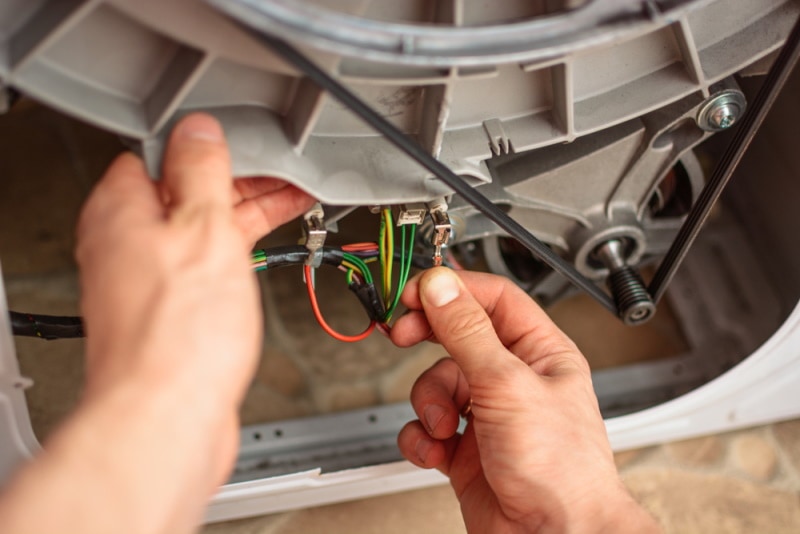
Check your washer using your level at least once per season, and adjust the legs as needed to keep your machine as level as possible.
What Happens If I Allow My Washer to Shake Around?
- The hopping and jumping of your washing machine can break internal components, which might render the machine unusable without maintenance.
- It’s more difficult to pump water out of an unlevel machine. Water left behind can contribute to mold and mildew growth, giving your clothes a bad odor.
- It can lead to a buildup of detergent residue.
- It can add wear and tear to the bearings inside the machine, leading to increased noise and failure.
- It can cause computerized or automatic machines to produce incorrect data, resulting in under- or over-cleaning.
- It can wear out the built-in shock absorbers
Conclusion
Checking to see if your machine is level is easy to do using a level, and many people already have one in the home. You can even use a free smartphone app to determine if your machine is level. If it’s not, it’s easy to fix by adjusting the adjustable height legs until your level lets you know that the washer is in the right position. If your model has self-adjusting rear legs, you only need to worry about the front legs. Otherwise, you will need to adjust all four legs until it is in position. After you lock it back down and run a test cycle, you should notice that your machine runs much smoother.
Featured Image Credit: Andrew Angelov, Shutterstock
Contents

